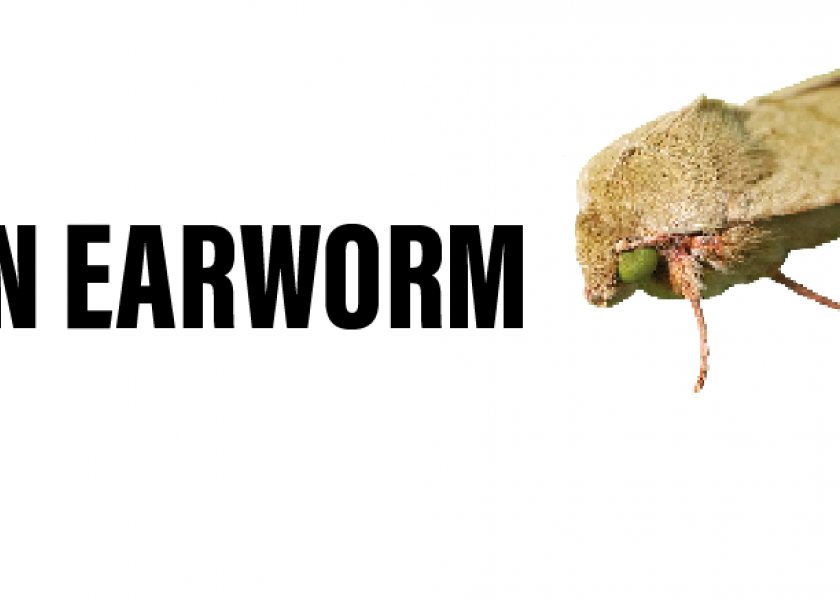Corn Earworm Puts Cotton Growers in a Tricky Position

Corn earworm, known better to cotton farmers as cotton bollworm, can quickly decimate a cotton field. For growers in southern states, the pests’ repeat exposure to common Bacillus thuringiensis (Bt) proteins leads to faster resistance and more problems that require expensive solutions.
While resistance in either crop is damaging, cotton farmers tend to feel the brunt of the damage, especially when compared with a typical
Midwest corn farm.
Why It Matters
“What’s different is in the South cotton and corn share it as a common pest, so there will be more generations of selection in the South than in the North,” says Pat Porter, Texas A&M Extension entomologist. “That’s why we have bigger required refuges in cotton country.”
Think of it like this: in southern states, corn earworm produces two generations on the corn crop before moving into the cotton crop. Corn and cotton share many of the same or similar Bt toxins. The corn crop’s latest Bt trait, Vip3A, is identical to cotton’s, meaning the pest has had three opportunities to select for resistance, so resistance development is accelerated over a single generation of selection on cotton.
”For these reasons, structured refuge requirements for corn are higher in cotton areas,” according to EPA.
What's the Solution?
So, what do Porter and some cotton farmers in the South want to see? Many corn farmers view Vip3A as “nice to have,” but he says it is usually not needed. While it protects the corn ear from tip feeding, he says corn earworm causes minimal yield impact, but the effect of multiple generations of the pest being exposed to the trait means cotton farmers might lose trait efficacy faster.
“I’m part of the NC246 entomologist group, and individual members have written formal responses to EPA to address these issues,” Porter says. Specifically, the researchers are trying to protect the one remaining Bt trait with no documented field resistance: Vip3A.
“When bollworm/earworm becomes resistant to Vip3A, cotton will suffer economic damage because bollworm is a major pest,” he adds.
In Defense of Traits
However, seed company experts claim VIP traits provide more value than they‘re getting credit for if you limit its usefulness only to efficacy against corn earworm.
Check out the current traits on the market, along with resistances and pyramid options here.
”One important thing to keep in mind is the spectrum of control,"
says John Fietsam, Bayer North American corn systems lead. ”It attacks Southwestern corn borer, black cutworm, western bean cutworm and others too.”
The Ripple Effect
If the last remaining effective trait against corn earworm fails, it's possible cotton growers could begin spraying as much pesticide as they did in the years before Bt traits were introduced.
“While there‘s certainly some validity to the argument that if the VIP trait isn't in corn you might see extended durability in cotton, we saw 20 years of success with Cry1 traits, and we think we can achieve that durability with VIP in corn,” says Nick Storer, Corteva Agriscience global regulatory advocacy leader.
Farmers need to employ tactics of insect resistance management (IRM) and integrated pest management (IPM) as appropriate to control this pest. It is generally advisable that farmers spray for pest control when economic thresholds are triggered.
”Best management practices include scouting fields for insect pests, appropriate insecticide applications and crop rotations,” says Tim O'Brien, Syngenta commercial traits manager. “When combined with proper refuge, these can help slow down insect resistance to Bt traits.”
More pesticide application puts additional selection pressure on those modes of action, continuing a cycle of resistance.







